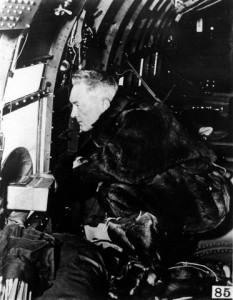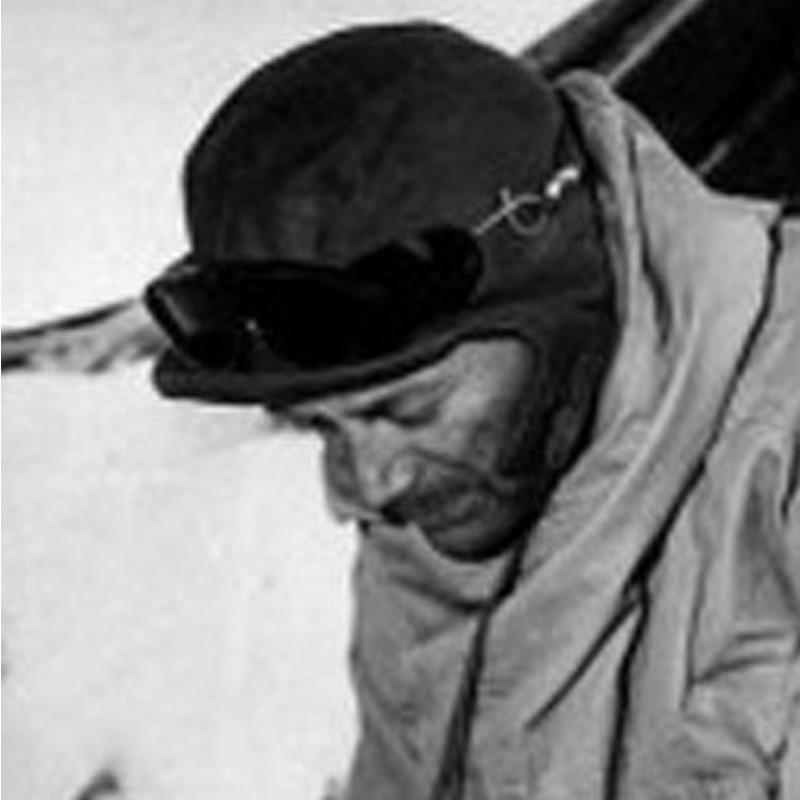1920s
The Roaring 20s were exciting years in American history. A World War had been won, and a booming economy ignited a wave of industrial ingenuity and economic prosperity. Nowhere else was this more evident than in the budding field of aviation, which was literally “taking off” following the aeronautical developments spurred by the war. For the first time aviators were able to fly their aircraft where no planes had flown before, and the polar regions were no exception:
- Donald B. MacMillan, with the support of the National Geographic Society, took three Navy amphibians with him when he explored the eastern Arctic in 1925. Lt. Cmdr. Richard E. Byrd commanded the aviation unit, and flights were made across Ellesmere Island and over the Greenland icecap.
- Richard Byrd succeeded in flying to the North Pole from Spitsbergen on May 9, 1926.
- Three days later, on May 12, 1926, Roald Amundsen teamed up with Lincoln Ellsworth to fly from Spitsbergen to the North Pole in the airship Norge.
- In April 1928, Hubert Wilkins and pilot Carl Ben Eielson flew from Point Barrow, Alaska, to Spitsbergen.
Meanwhile, down in Antarctica, in 1928 Commander Byrd launched the most ambitious feat of polar exploration ever attempted up to that time. He sailed to Antarctica and established his “Little America” base camp on the Ross Ice Shelf. The expedition was remarkable for several reasons:
- Byrd took 44 men, 95 sled dogs, and three airplanes one of which he would employ on the first flight to the South Pole on November 29, 1929.
- Three towering radio antennas were built to communicate with the outside world. Expedition member Russell Owen of the New York Times received a Pulitzer Prize for transmitting regular dispatches to a captivated audience back in the States.
- In another first, Byrd sponsored a competition with the Boy Scouts of America to select a scout to join his expedition. Eagle Scout Paul Siple won. Siple would make six trips to Antarctica and was chief scientist at the first South Pole station established in 1956-57 as part of the International Geophysical Year.
Concurrent with Byrd’s expeditions to the Arctic and Antarctica is the remarkable story of August Howard, son of a Russian immigrant and tailor. Howard had two passions; the first was scouting. In 1928, at the age of 18, he secured an administrative job with the Boy Scouts of America which evolved into a life-long occupation. His second passion was polar exploration. When Byrd teamed up with the Boy Scouts to select an Eagle Scout to join his first Antarctic expedition, it was only natural that August Howard and Paul Siple would meet and become fast friends.

Rear Admiral Richard E. Byrd
1930s
In 1933, when Richard Byrd, now an admiral, began his second expedition to Antarctica, Siple joined him as a field team leader. By this time, August Howard had been appointed assistant director of publicity for the National Council of the Boy Scouts of America and advisor to the Manhattan Boy Scout Press Club. Howard launched the Little America Times, a monthly newsletter reporting the activities of the second Byrd expedition, as well as news from Lincoln Ellsworth’s Antarctic expedition of 1935. Eighteen issues of the Little America Times were published, and when concerns arose over whether it had violated Byrd’s contracts with other news media, Admiral Byrd himself stepped in to support Howard’s publication.
On July 31, 1934, August Howard proposed the creation of a privately funded organization to be named the American Antarctic Society to serve as a clearinghouse of information about Antarctica. He noted that public interest was at a fever pitch following the exploits of Admiral Byrd and Lincoln Ellsworth. The American Museum of Natural History offered space for meetings and a mailing address. By January 1, 1935, the new Society had twenty-five members.
A few months later, Fred Meinholtz of the New York Times urged the name of the organization be changed to the American Polar Society, to expand the range of interest and number of prospective members. Meinholtz operated the radio station of the Times, which had been put at the disposal of Byrd’s first Antarctic expedition. The American Polar Society held its first annual meeting on November 25, 1935, at the American Museum of Natural History. Paul Siple was elected president.
The first issue of The Polar Times appeared in June of 1935. It brought news of interest to explorers, arm-chair explorers, and polar enthusiasts excited by tales of adventure. Of course, much of the issue focused on Admiral Richard Byrd’s second expedition and that of Commander Lincoln Ellsworth. The issue also included stories of adventure in the Arctic, plans by Sir Hubert Wilkins for a submarine expedition beneath the Arctic Ice, and an item on Soviet oceanographic activities in the far north. For the explorer-in-waiting, there were useful articles about tractors in polar work and surveying in Antarctica. Historians then, and even now, appreciated the biographical information contained in obituaries of famous figures in polar exploration and scientific discovery.
1940s – Present
The organization continued to grow as celebrated explorers like Hubert Wilkins, Richard Byrd, Richard Black, Bernt Balchen, and Finn Ronne joined its ranks. By 1947, the American Polar Society had doubled its membership to 500 members across forty-one states and sixteen foreign lands. Two years later, August Howard reported that membership had again more than doubled to 1,319.
Beginning in 1936, the American Polar Society designated as “Honorary Members” those explorers and scientists who had distinguished themselves in polar activities. The first was David L. Brainard of the Adolphus Greely Arctic expedition (1881-84). Thereafter, many others received that honor, including Richard Byrd, Vilhjalmur Stefansson, Lincoln Ellsworth, Lawrence Gould, and Louise A. Boyd.
On December 4, 1988, August Howard died. The American Polar Society designated Peter Anderson, assistant director of the Byrd Polar Research Center at Ohio State University, to succeed Mr. Howard. However, health issues soon prevented Peter from advancing the work of the APS and managing the publication of The Polar Times.
In 1992, the American Polar Society turned to one of its members, Captain Brian Shoemaker (USN, Ret.) to helm the organization and publish and edit The Polar Times. Captain Shoemaker commanded the Naval Support Force Antarctica from 1982 to 1985. The first American Polar Society Symposium was conducted in October 1998, and an Oral History Program was launched during the Shoemaker era.
The American Polar Society remains the only organization linking scientists, explorers, and enthusiasts around the world who value the uniqueness of the polar regions and play critical roles in shaping its destiny. For more than three-quarters of a century, the APS has kept this select community updated on scientific, military, diplomatic, literary, and economic trends and developments in the Antarctic and Arctic.
As communications have advanced, the APS now also reports from the field, breaking news and providing inside commentary from leaders and members of scientific exploration parties, government officials, and a network of correspondents.


